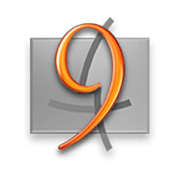 Although it was almost a decade ago, the slow and painful migration from Apple's "Classic" Mac OS 9 to the sleeker Mac OS X sure feels more recent. To take the plunge and buy Mac OS X in its earliest days (and yes, I was running its Public Beta for $29) was to take a leap of faith - one embedded in promise more than immediate benefits. You couldn't play DVDs or Print in practically all cases. Most applications were missing - and to get to your old environment, you had to boot up your now antiquated desktop in emulation mode, or "Classic".
Although it was almost a decade ago, the slow and painful migration from Apple's "Classic" Mac OS 9 to the sleeker Mac OS X sure feels more recent. To take the plunge and buy Mac OS X in its earliest days (and yes, I was running its Public Beta for $29) was to take a leap of faith - one embedded in promise more than immediate benefits. You couldn't play DVDs or Print in practically all cases. Most applications were missing - and to get to your old environment, you had to boot up your now antiquated desktop in emulation mode, or "Classic".The feeling of running these old apps, and holdovers like PhotoShop and Quark Express, was gritty, slow, and subject to the occasional bomb error. Over time, one booted into Mac OS 9's Classic mode less and less and then one day, never again, as it faded to black. If you're an iPad user, and you've booted up some of your old iPhone apps that haven't been remastered for the larger screen and swifter graphics and processor, you're likely feeling some of the same emotions as we did a decade ago.
While the iPad's support of previously-compiled iPhone apps made amazing sense, to populate the device with hundreds of thousands of applications on day one of its launch, I am finding myself avoiding or deleting as many iPhone apps from the iPad as I can, if they are not necessary - and no, we ca't print on the iPad now any more than we could run DVD's in the first runs of Mac OS X. In comparison to applications built with the iPad in mind, the "supersized" iPhone apps, for the most part, suffer in look and feel and bring back that same understanding that emulation is never as good as the real thing.
It may seem ever more complicated as a developer to rebuild and rewrite code for the newest of Apple's devices, in addition to the myriad of alternatives, including Google's Android platform, the various flavors of Windows, and Mac OS X itself, but with a swelling population of iPad users who appear willing to pay standard to premium prices for dedicated applications, one can safely assume that if one developer doesn't meet customer's needs, they will seek out and install an alternative. And those who are slow to the iPad, resting on the laurels of their iPhone apps' prowess, will no doubt be the losers.
This isn't to say that all iPad-targeted applications are amazing. Some of the earliest are just repackaging of content from Web sites (see eTrade and ESPN), but the best (like MLB's At Bat application and Apple's iBooks) are comparable to full desktop environments and fit perfectly in the iPad's hardware frame. But that's no doubt because we are in the early days of iPad development. While some are saying you have to wait and see what the breakout application will be for this new platform, the opportunity awaits those who get the environment right.
In addition to deleting iPhone-optimized apps I probably wasn't using much anyway, I find myself cruising the Apple iTunes Store, waiting for amazing iPad Apps to debut which I can download in their place. For the most part, I'm not yet finding them. I've been amused by the Doodle Buddy application, which lets my kids finger paint on the device. I have enjoyed using the iPad as a racing car, and think Apple's native apps are pretty solid. But we are clearly in a transition time where the current offerings are light, as we wait for the library of apps for iPad to grow, and possibly, those that only are compiled for iPhone may decrease.
Given my array of choices in terms of how I can get my data and my apps, from the laptop to the iPad and the iPhone, I am not planning to suffer emulation and go-betweens and longer than I have to. In the same vein as Apple refusing ported Flash apps on their platform, I too want to enjoy applications designed for the device I am taking in, and not somebody's quick and dirty recompile. We went through the strain of Mac OS 9 to Mac OS X, and I hope Apple has proven themselves enough by this time that the call to arms for more native apps will occur much more quickly.
